Dutch tulips: varietal variety and growing tips

Tulips are flowers that have won the hearts of people for centuries. They make flower beds and flower gardens more attractive due to their beautiful colors and variety of shapes. The Netherlands is considered the birthplace of tulips. That is why these Dutch plants are still highly regarded. Flowers from these places are considered the best in quality.
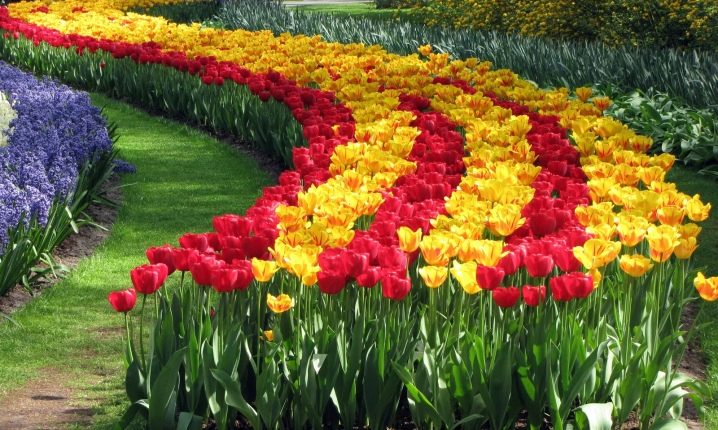
Can bulbs be exported?
If you are dealing directly with the suppliers of flower bulbs from the Netherlands or you yourself want to bring real Dutch tulips from there, do not do this without first reading the requirements.
If you bought tulip bulbs, be sure to ask the store for a certificate for them. Only if it is available will the customs service release you from the country.
These rules also apply to import - plants on a substrate and flowers must have official relevant documents.
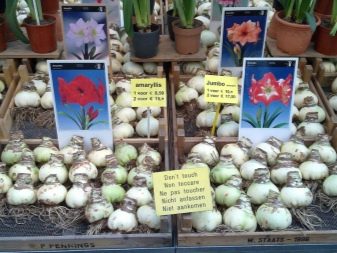

Varietal variety for forcing
Forcing is a method of growing plants in an accelerated manner using artificially created air temperatures. The name speaks for itself. The person leading the process, as it were, "forces" the sprouts to be expelled. And the bulb, which can be brought directly from the Netherlands, is the basis for the further process of forcing tulips.
Previously, gardeners, in order to grow tulips at home, chose only those varieties that do not need to be carefully monitored. Today, flower growers have the opportunity to take almost any variety for forcing. This is due to the fact that improved techniques, a variety of fertilization methods and stimulants are now available.
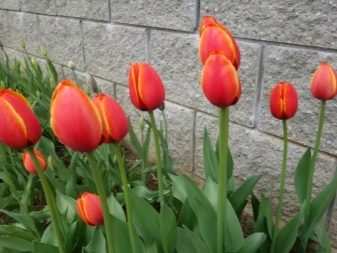
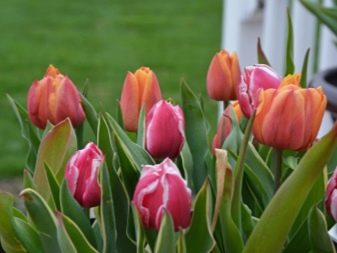
Many varieties of Dutch tulips are suitable for this process. The following are considered the best of them.
- Tulip Mix (Tulipa Mix). Such flowers have an unusual appearance. They are short and colorful. Perfectly transform any flower bed. For cultivation, it is advisable to find a bright place where there will be no cold wind.
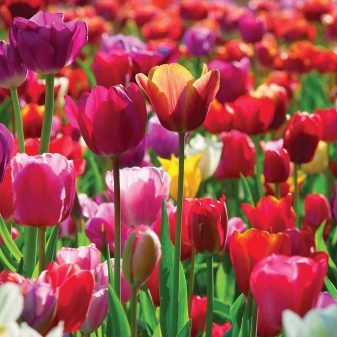
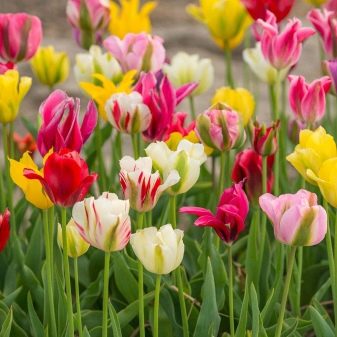
- Rainbow. The height of the stem reaches 65 cm. The flowers have a classic goblet shape, they can be of different colors. The most common are pale yellow buds with light pink petals on the outside. Perfect for cutting.

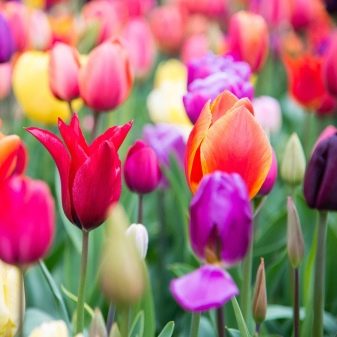
- Parade Record. Flowers of this variety are bright red and thin yellowish veins. Also, these tulips have a strong immunity to diseases.
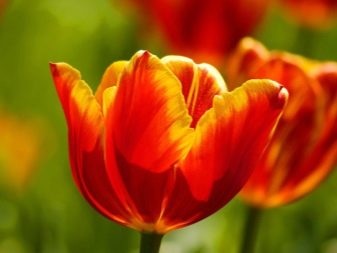

- Ice Cream. The flowers of this variety are quite large. They combine several colors: white, deep green, pink. They are relatively low (27 cm), while beautiful due to the double, spherical flower. Disease resistant.
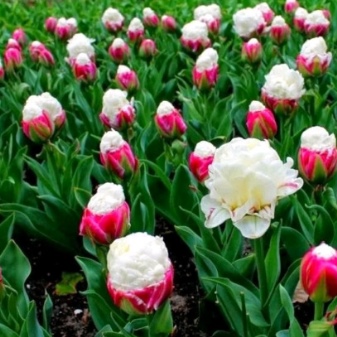
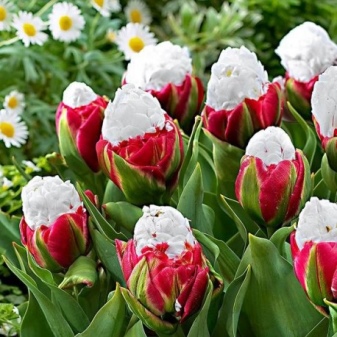
- Burguni Leis. Unusual fringed buds of rich crimson color. The height of the plant is about 50 cm. The flowers are large in diameter and shaped like a glass.
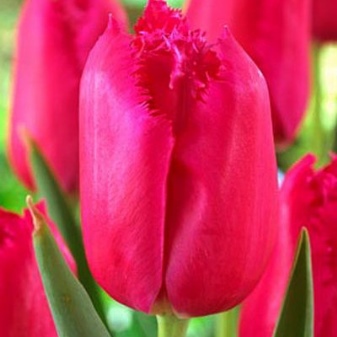
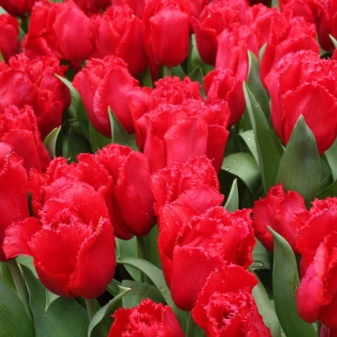
- Aria Card. This tulip variety differs from the previous one in that the flowers are matte. They do not have the usual glossy sheen on the petals. However, they are attractive and are often chosen for a flower bed or for a flower pots by the window. From the pros: resistance to cold and changing climatic conditions.
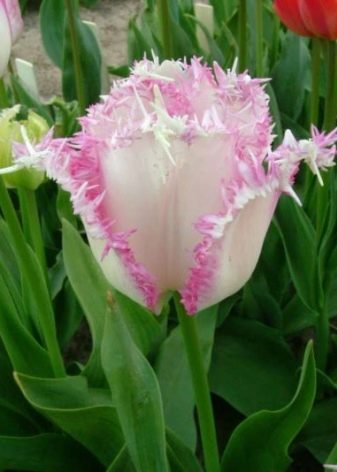
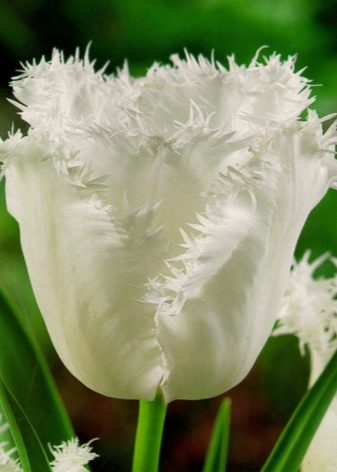
There are a huge number of Dutch tulip species, and almost all of them are suitable for forcing. Therefore, you can pick them up based on the season for which you are going to make forcing.
For example, if you want to enjoy the beauty of flowers for the New Year holidays, you should choose varieties whose buds are cooled for at least 4 months. These are early flowering: Christmas Marvel, Epricot Beauty.
In order to get tulips by spring, you can choose Darwin hybrids: Parade, Vivex.
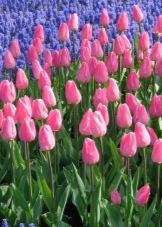
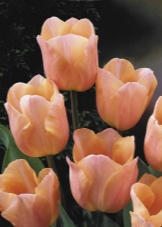

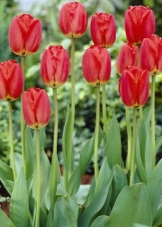
By April, through accelerated growth, flowers of the following varieties can be seen: London, Hibernia.
If you want to get beautiful tulips for the May weekend, then they are great: Diplomat, Temple of Beauty.

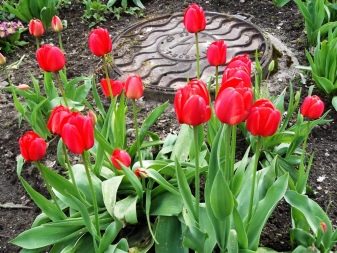
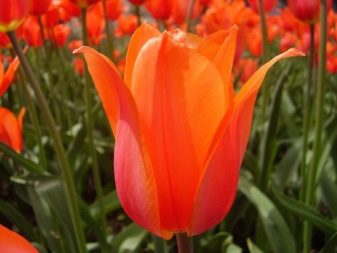
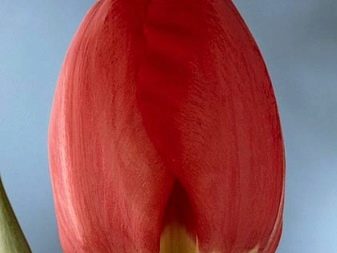
Thus, in order to choose the right variety, you should initially decide on the season (in what period you want to get the desired result) and on the requirements for caring for a particular type of tulips.
Basic growing tips
Dutch tulips have won the hearts of flower growers not only because of their stunning beauty, but also due to the lack of special care requirements. However, they still require certain rules to be followed when growing. The main ones are listed below.
- To plant Dutch tulips, it is necessary to find new sites every year. Because their peculiarity lies in the fact that the bulbs will not grow in the same place.
- Finding a bright spot for the flowers is equally important. Tulips of these varieties do not like cold winds and, moreover, drafts.
- For tulips to grow well, the soil must be clean (weed-free).
- The site needs to be prepared in a month and a half. This is a very important detail - the dug earth must have time to settle. Then this process will not damage the root system of the bulbs, and the flower will take root.
Planting period
If you want to enjoy the beauty of beautiful flowers in your summer cottage, you should plant them in the fall. This is important, as these flowers like when the ground is already slightly chilled.

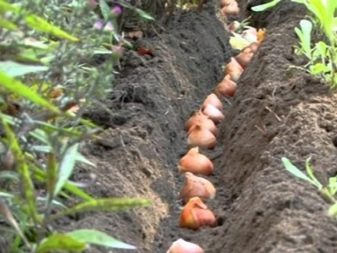
It is extremely important to follow the basic rules during transplantation.
- Dutch tulip bulbs must be planted before the frost begins (3 weeks) so that they can take root. If you break this rule, the flowers will simply die during the winter frost.
- Spring planting requires compliance with a similar rule - the soil temperature is acceptable up to +11 degrees. That is, it should already have time to warm up.
Bulb care
Many people think that bulbs cannot be stored and re-grown after the forcing process has taken place and can be thrown away. In fact, there is a way that you can grow them.
After you have grown the flowers in an accelerated way, you need to cut them. If these are rather tall tulips, then leave some leaves, if they are low, then this is not necessary. In any case, after 21 days, the bulbs can be removed from the ground.... After they were taken out, the main process begins - drying. They begin to make it at 25 ° C, then gradually reduce the temperature. And in conclusion, they are planted in the ground, which by this moment should have no more and no less than 15 ° C.
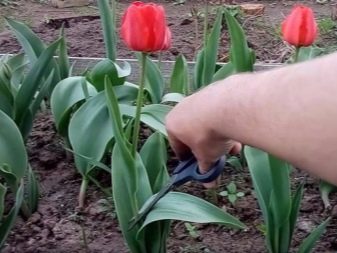
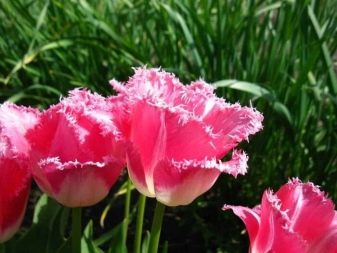
As a rule, growers do not grow the bulbs that were used for forcing early flowers because they do not produce good bulbs. Otherwise, even following all the rules, the growing process may take a year or even several years.
So, Holland is deservedly considered the birthplace of tulips. It doesn't matter if you are a professional, a florist or just a connoisseur of beauty - having studied a huge number of forcing varieties of this plant, you will definitely find the right one for you. A bouquet of bright red tulips will be an excellent present for a loved one. Or the flower bed on your site will sparkle with different colors of these wonderful flowers.
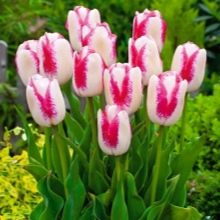
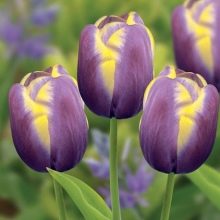

See the video about the varieties of garden tulips below.







































































































The comment was sent successfully.